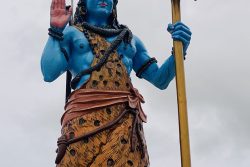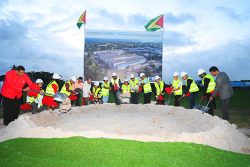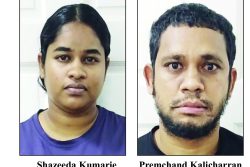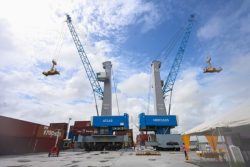Georgetown is probably the least expensive capital city in the world to traverse with a taxi-fare for one drop $300 (US$1.50), while the fare on any minibus route is $60 (30 US cents). The bonus is a ‘chapta’ adventure, a roller coaster ride with the sonic boom of indecipherable music in the enclosed jam-packed minibuses; the incessant horns hooting in routine standstill, gridlock traffic jams; and Usain Bolt-style dashes to beat every traffic light. Praying is expected, and choking possible as the breath is held in this daily lottery of playing chicken on the roadway.
As Georgetown developed with wards in the latter half of the nineteenth century, the streets of Bourda, Kingston, Vlissengen, Newtown and Queenstown were burnt earth tracks with bridges to cross the several canals. Initially, horses were forbidden on some streets, so walking was the norm. Of course the rich would have had their horse and carriage, with challenges to traverse quagmire streets during the rainy season, and they were strewn with cinders and debris from the too frequent fires to try and make them serviceable. From 1832, the George Knox and Co, Saddlery and Coachworks Materials, on Hincks Street, specialized in the importation of saddles, and by 1909 the business was still going strong.
The Georgetown Livery Stables Company opened in April 1902, with three large premises on Hincks, High, and Camp Streets. They had no less than 65 horses and seventy English and American carriages. Most of them were rubber tyred, and were available at all hours for transportation around the city at moderate charges. There were even American grey stallions for wedding and festive occasions. The firm was also the chief undertaker in the colony and carried a stock of coffins ranging from plain unadorned shells, to those with an upholstered finish, plus eight hearses, some with refrigerator apparatus. Bastiani’s Queenstown Livery Stables, Lee’s, Lykens and Merriman’s came later.
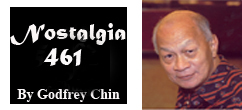 Bicycles were introduced in Georgetown in 1899 by A F Chapman, who after leaving school, opened Chapman’s Cycle Depot at 43 Regent Street. His models included Rovers, Swifts Humbers and Rudge-Whitworths. Com-petition at this time came from Franco and Fernandes, at 10 Commerce St (later D M Fernandes at the same site below King George’s Boarding House). Other cycle importers later included Hacks, Crescent, Semco and Pradasco’s. Bicycles were the popular means of getting round the city and bicycle sheds were mandatory at the workplace, schools and cinemas. They were the popular incentive reward for scholastic achievement at scholarship (the 11 plus exam). There were many cycle rental shops around the city, where a bicycle could be rented for eight cents an hour after leaving your name in an exercise book.
Bicycles were introduced in Georgetown in 1899 by A F Chapman, who after leaving school, opened Chapman’s Cycle Depot at 43 Regent Street. His models included Rovers, Swifts Humbers and Rudge-Whitworths. Com-petition at this time came from Franco and Fernandes, at 10 Commerce St (later D M Fernandes at the same site below King George’s Boarding House). Other cycle importers later included Hacks, Crescent, Semco and Pradasco’s. Bicycles were the popular means of getting round the city and bicycle sheds were mandatory at the workplace, schools and cinemas. They were the popular incentive reward for scholastic achievement at scholarship (the 11 plus exam). There were many cycle rental shops around the city, where a bicycle could be rented for eight cents an hour after leaving your name in an exercise book.
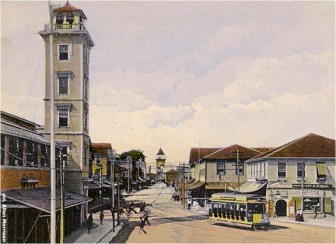
The local Fire Brigade rushing to fires would be chased by ever curious and ‘fast’ citizens on bicycles, while later with the intro of the Sturmey Archer 3-speed ticker, Sunday afternoon cruising on the Sea Wall became our big lime.
On January 17, 1891, Lady Gormanston turned on the first electric lights in the city. Popular transportation around the city was by horse trams, but with the advent of electricity, the Demerara Electric Company in Montreal purchased the Georgetown Tramways Company and electric tramcars were inaugurated on February 25, 1901. The tramcar service ended in February 1930 and I often wonder whether the installation of the sewerage system in the city from March 17, 1924 and the laying back of the ‘tramlines’ accounted for their demise. Much of the rolling stock was transferred to Port-of-Spain, which maintained this service another 25 years.
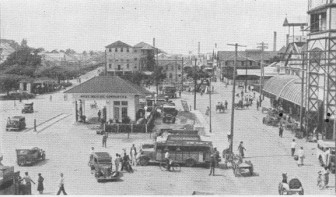
Must mention this ‘nylon’related by William McDowell, former Chief Fire Officer in the Daily Chronicle 1974. On November 21, 1924 at 5 pm the concrete Parade Street bridge from the railway line to Cowan Street slumped abruptly into the coffee-brown water of the Cummings Canal, having broken its back. Travelling to Kingston and the north of the city was affected as only a few weeks earlier the High Street bridge was started, and the Camp and Water Street bridges were the only ones available.
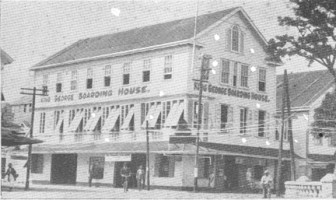
I am not aware when motor cars came to BG. Central Garage commenced their service in 1915 at High Street as dealers in automobiles, tyres and batteries, and the Central Filling Station opened at Hincks and South Street in1929, supplying gasoline, oils, grease, and general car service with washing facilities. The latter site was destroyed by fire in 1947 and again in 1962 and so was Esso Majeed’s Gas Station in the late sixties. Esso Standard Oil commenced marketing petroleum products in Guiana in 1925 at 19 Water Street with their first outlet at the Stabroek Square. Shell and Texaco followed later.
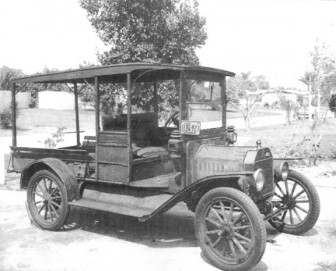
The Daily Chronicle in January 1934 listed bargains in trucks and cars as follows: Chevrolet with four new tyres and battery $350; Chevrolet 1929 1/2 ton truck $275; Raleigh Motor Cycle $135; Ford Model T car $175.
In 1967 as the middle class started to own vehicles. The price of motorcars locally was a Morris Minor $3600; Oxford $4200 (Bookers Garage); Hillman $3800 (Sprostons); Toyota Corona $4200; Deluxe $4500; Crown $4800 (Auto Supplies); Austin $4500 (Gajraj); Holden $4800 (Sanbach Parker). Other popular models at that time included the Citroen, Fiat, Vauxhall, Wolseley; with Datsun just entering the market.
Clyde Duncan of Vancouver Canada says that his grandmother purchased the first sample Austin A40 Deluxe Saloon from Gajraj in1959, and his father Sergeant Duncan created a stir when he drove it into Eve Leary compound. An expatriate officer enquired as to where the money came from. The acquisition of one’s home and four wheels in those days were proof ‘ya reach!‘
Popular hire car services included Bookers Garage, Tower, Cyril‘s, Norman’s, Loy’s,Wong’s, Mitchell’s, Cheong’s and City.
In the forties John Mohamed, owner of Tower Garage, Robb Street, opened the Motor Transport Service with headquarters in Water Street (now Ming’s) with a bus terminal for the bright yellow fleet off Stabroek Market. The bus fare around the city was 6 cents through a turnstile. This service was useful until after Independence and closed as the controlled fares were not enough to maintain the service.
Government in attempting to control and own public transport introduced the Guyana Transport Services Ltd, with the first batch of Tata buses from India arriving in January 1974 with the old railway station, Lamaha Street becoming the terminal. This service was discontinued because of high maintenance costs, and the Tapir, locally built vans, though of limited capacity, from Ainlim, were utilized for a while. By the late eighties when foreign exchange controls became less stringent, the fifteen-seater minibuses began to be imported and are today the means of public transport around the city. Tapir buses in vintage condition are still in operation today in the Skeldon area.



